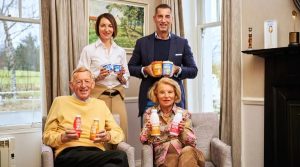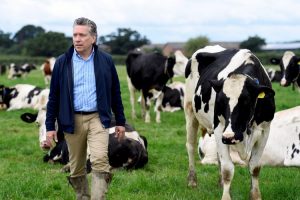
Women trying for a baby are being targeted by formula milk companies on social media even before they have become pregnant, a World Health Organization scientist has said.
Formula milk brands use online shopping and search data to detect when someone is planning a baby, said Dr Nigel Rollins, of the department of maternal, newborn, child and adolescent health at the WHO.
“Digital platforms have made [the] industry massively more powerful,” he told the Unicef Baby Friendly annual conference last week. “Companies use sophisticated algorithms to target ads to women whose online behaviour suggests they might be pregnant.”
Researchers have previously reported how formula milk marketing executives described first-time pregnant women as “the holy grail”.
Rollins explained how women who ordered folic acid – an essential nutrient in early pregnancy – or browsed fertility or pregnancy information websites were likely to be profiled as thinking about starting a family.
Formula milk brands could then target these women by promoting branded social media posts, including those for their own apps, online “baby clubs” or helplines offering advice on getting pregnant, staying healthy during pregnancy or parenting.
Direct advertising of formula milk to parents of babies under six months old is prohibited in the UK but loopholes mean companies can provide advice to pregnant women and new parents under their own logos.
Rollins claimed the ultimate intention was to establish a “relationship” between the parent and a brand before a baby was born. “It is a way of providing ‘support’ but essentially it is marketing in disguise,” he said.
Rollins emphasised there should be no criticism of mothers who chose or needed to use formula milk. “Women and families should make, and have the right to make, decisions that best serve their circumstances.”
A WHO report published earlier this year warned it was “difficult” to avoid digital marketing of formula milk, especially when people were looking online for information about, or support for, breastfeeding.
It also suggested companies were deliberately targeting pregnant women and new mothers in their “most vulnerable moments”.
“Content that appears to offer information personally tailored to meet mothers’ concerns can be delivered at the very moment a woman seeks information on infant feeding,” it added.
“The content of these promotions typically presents a [breastmilk substitute] as the solution for challenging but normal infant behaviours like hunger, crying or digestive discomfort,” the report said.
Shereen Fisher, programme director of the UK committee for Unicef Baby Friendly Initiative, said: “Powerful multinational infant formula companies push the boundaries of existing legislation to promote their products. We need to make sure all babies and parents are protected from misleading marketing practices.”
A spokesperson for the British Specialist Nutrition Association, which represents the UK formula milk industry, said: “When parents are unable to, or choose not to, breastfeed, a scientifically developed infant formula is the only food recognised by the WHO as a suitable and safe alternative to breastmilk.
“It is important that parents can make informed choices about the options that are right for their baby and situation. We need to support parents with factual nutritional information, including on packaging and online, so that they can make the right decision for them. It’s a responsibility we take seriously.
“BSNA members comply with the WHO code as implemented in UK law and wish to contribute to a balanced, sensible debate about responsible marketing of formula, and protecting and promoting breastfeeding.”




















